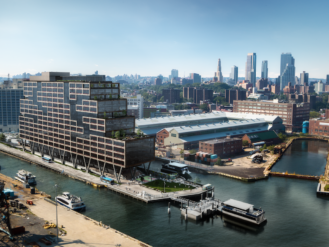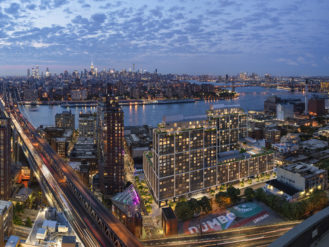Where in Brooklyn Can a Small Business Find Decent Rent?
With prices for space so high, are there any good deals left out there? The experts suggest three sweet spots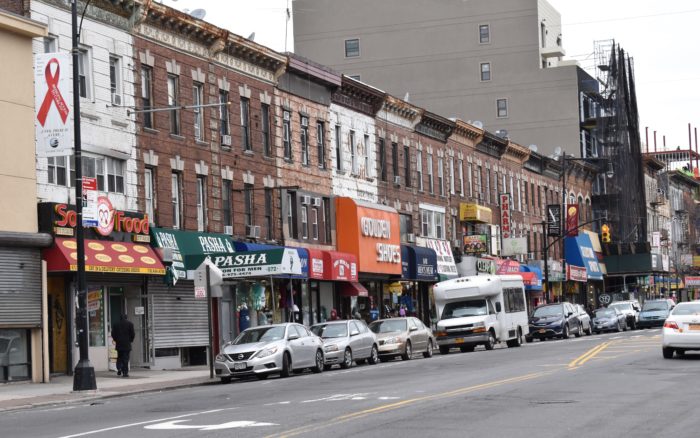
A retail corridor along Flatbush Avenue in Prospect-Lefferts Gardens (Photo by Arden Pillips)
Even just a decade ago, Brooklyn was a place where an entrepreneur aiming to open up a storefront business could find a relative bargain in rent. But those days are gone in many Brooklyn neighborhoods, where rents have reached levels found in the fancier precincts of Chicago, San Francisco and Miami. Commercial rent along Bedford Avenue in Williamsburg between North 3rd and 8th streets now tops $300 per sq. ft., a 477% increase from a decade earlier, according to a report from CPEX Real Estate. On Court Street in Downtown Brooklyn, rent reaches nearly $250 per sq. ft., up 144%.
While peak retail rents may be softening a bit, on many of Brooklyn’s commercial corridors they’re unaffordably rich, especially for small-business people who don’t belong to a national chain. So where in the borough can they go? We asked several real-estate experts to identify places in the borough with the right combination of reasonable rent, steady foot traffic, residential proximity and neighborhood cohesion.
To be sure, new startups setting up in established neighborhoods can carry the baggage of gentrification, especially if the newcomer’s attitude is one of a conquering hero. However, small-business startups that bring something valuable to a neighborhood can fit right in. Suggested sweet spots for entrepreneurs:
The Prospect of Rogers Avenue
Just south of Crown Heights and abutting Prospect Park, the neighborhood of Prospect-Lefferts Gardens (or “PLG”) is welcoming a new generation of residents in their 20s and 30s, attractive to retailers because they like to dine out and shop locally. The neighborhood already has major commercial corridors on Flatbush and Nostrand avenues. Just one block over from Nostrand is another stretch teeming with storefronts that Terry Robison, a Douglas Elliman broker, thinks is primed for fresh business owners. “Rogers Avenue is percolating right now,” Robison says. To him, “it feels similar to what Smith Street in Cobble Hill and Carroll Gardens felt like 10 to 15 years ago,” which has since “priced itself out of being cool.”
“The rents on Nostrand Avenue are more price-per-square foot than they are on Rogers Avenue,” Robison continues, but now is the time for retail bargains because higher rents from neighborhoods like Park Slope will almost inevitably reach PLG as well. Residents fleeing those pricier neighborhoods will want to stay close to Manhattan-bound subways, and “they will want these ‘alternate shopping strips,’ if you will,” Robison says.
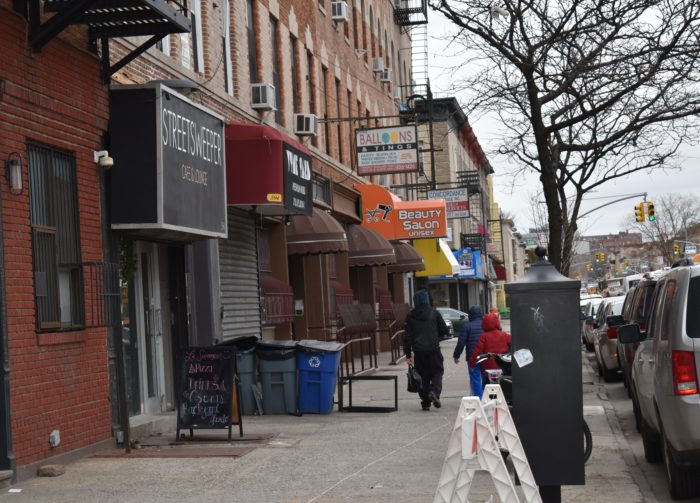
Shops along Rogers Avenue in Prospect-Lefferts Gardens (Photo by Arden Phillips)
“The neighborhood right now is one of the last [affordable] ones around Prospect Park, which is a huge amenity,” says Justin Losh, director of commercial leasing at Nooklyn, the Bushwick real-estate startup. In PLG, Losh observes, commercial real-estate prices are still a great value vs. neighborhoods close by. Prices on Franklin Avenue, only a half-dozen blocks north of the PLG border in Crown Heights, have reached $70 to $75 per sq. ft., “which is starting to price people out.” While asking prices vary depending on the tenant’s type of business, in PLG, “right now you could probably pick up a space for about $30 to $35 per sq. ft,” Losh says. “But I expect that every month it’s going to go up.” And entrepreneurs who have the capital and nerve to buy their own property can still find older buildings in PLG to buy and fix up.
The Nook Around North 12th Street
Williamsburg is known the world over as a serious case of gritty-gone-glitzy. But sometimes it helps to look around the margins of an obvious place. One such nook is the North Williamsburg/Greenpoint borderlands around North 12th Street. “The market prices are now about $90 [per sq. ft.] to $125, depending on what the product is and where you’re located,” says Brendan Thrapp, senior director of commercial real estate Brooklyn real-estate startup EXR. Considering that prices just south in Williamsburg’s epicenter can be almost three times higher, the northern section looks like a bargain.
Part of what has Thrapp bullish on North Williamsburg is the construction of an eight-floor, 480,000-sq.-ft. office building at 25 Kent Ave., expected to be open by the end of this year. To find occupants, the building’s development team, Rubenstein Partners and Toby Moskovits’s Heritage Equity Partners are “going after the largest tech, media, and advertising companies in the world,” says Thrapp. The developers have pitched the site as part of the city’s bid to attract Amazon’s proposed second headquarters.
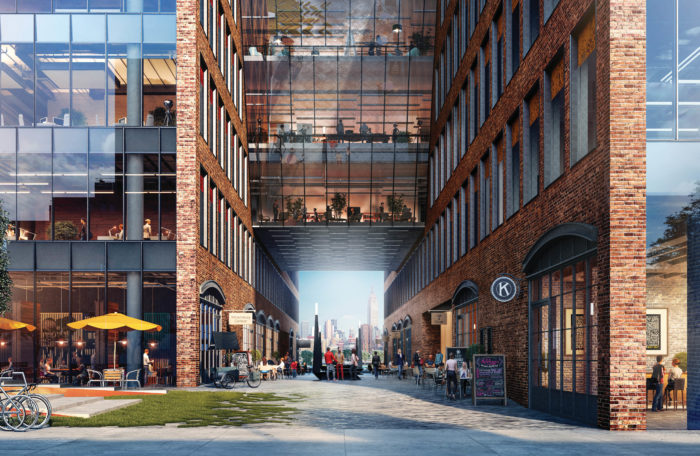
The office building in development at 25 Kent Ave. in Williamsburg is expected to bring thousands of workers into the neighborhood (Rendering courtesy of 25 Kent)
Thrapp estimates 25 Kent will see 3,000 workers troop in and out of the building every day, going out for mid-afternoon coffees and post-workday happy hours and dinners. “So, you have the weekend crowd, you have the Manhattan crowd that comes [to North Williamsburg], you have people who live [there]. But the real big kicker is when these office buildings open and tenants come in,” says Thrapp. “It changes the whole picture.”
As Brooklyn increasingly becomes a hotspot for office-building openings, this type of neighborhood change is bound to creep up elsewhere. Even Dumbo, says Thrapp, still has bargains to be found for retail space, in the range of $60 to $100 per sq. ft., given that more offices are in the pipeline, including 10 Jay St.
The Bargains on Broadway
Another Brooklyn enclave well on its way to a thriving retail economy is Bushwick, which has benefited from the Williamsburg diaspora. “I think Bushwick is—not to be politically incorrect—no longer the ugly stepsister to Williamsburg,” Thrapp says. The CPEX report found that more than 31% of all the new bars and restaurants opening in Brooklyn in 2016 were in just three neighborhoods: Williamsburg, Greenpoint and Bushwick. The latter neighborhood offers cheaper places to start such businesses, as well as others. “There’s a lot of space, a lot of opportunity for different concepts that are indoors—your rock-climbing places and gyms,” says Thrapp. CPEX described the neighborhood’s Wyckoff Avenue retail area as “poised for growth.”
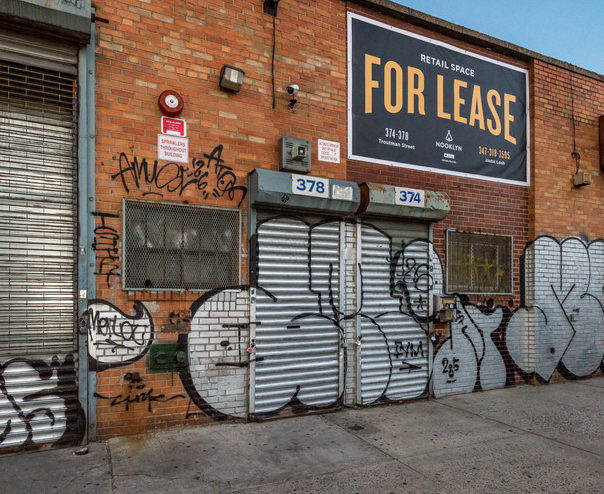
A commercial building on Troutman Street in Bushwick is available for just $35 per sq. ft. (Photo courtesy of Nooklyn)
Douglas Elliman’s Robison points to Bushwick’s Broadway thoroughfare, running between Lorimer Street and Decatur Street, as a strip he believes is about to see a huge uptick in foot traffic. “The reason why is because of the L train going down,” Robison says, referring to the planned 15-month shutdown for tunnel repairs, due to start in 2019. The J, M, and Z trains that run along Broadway are certain to become an L-train alternative for many straphangers. “All those people will have to go and get the train somewhere, and pick up their coffee, bagel, dry cleaning, groceries. They will find the Broadway corridor. I think it’s going to explode,” Robison said.
Losh points out that the L-train situation has created good deals in Bushwick in areas adjacent to it. “We saw a lot of large nightlife and music venues sign leases in the past two years, but since the announcement of the L train shutdown, people are a little concerned about how that will play out,” Losh says. One of his listings, a 12,500-sq.-ft. former warehouse on Troutman Street, is asking just $35 per sq. ft. “Uncertainty is a type of risk, and investors avoid risk. The brave will be rewarded,” Losh says.
Indeed, the L-train disruption will benefit entrepreneurs playing the long game. “There will be a short-term hit, that’s for sure,” Thrapp says, “but the demographics, the people businesses go after, are already in Bushwick. They’re not counting on Manhattan folk to make their numbers. Inevitably when the L train comes back on line, it’s going to be the most up-to-date subway in New York City, [aside from] the Second Avenue Subway. There will be additional capacity, many more trains; it’ll be a benefit to the area.”






